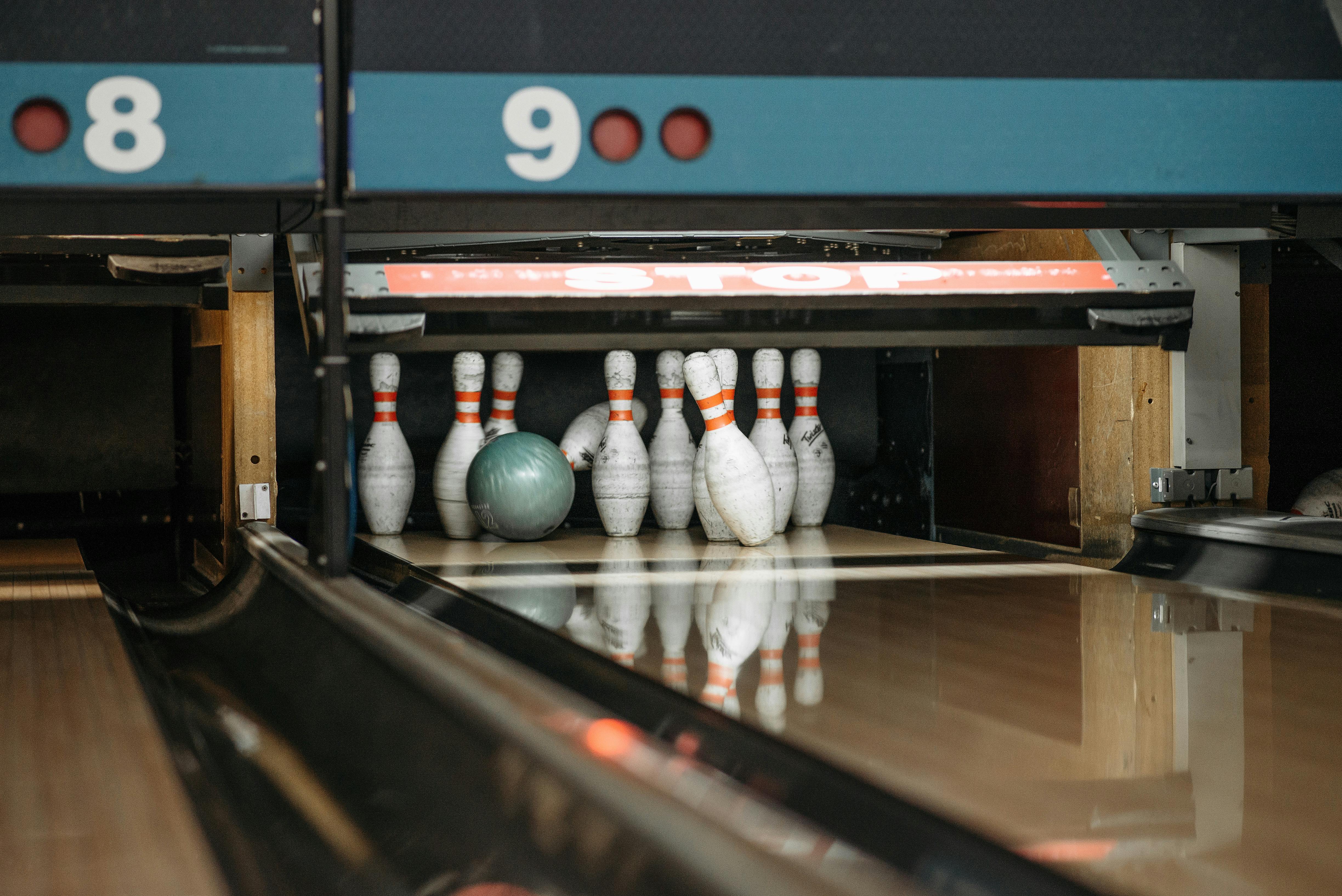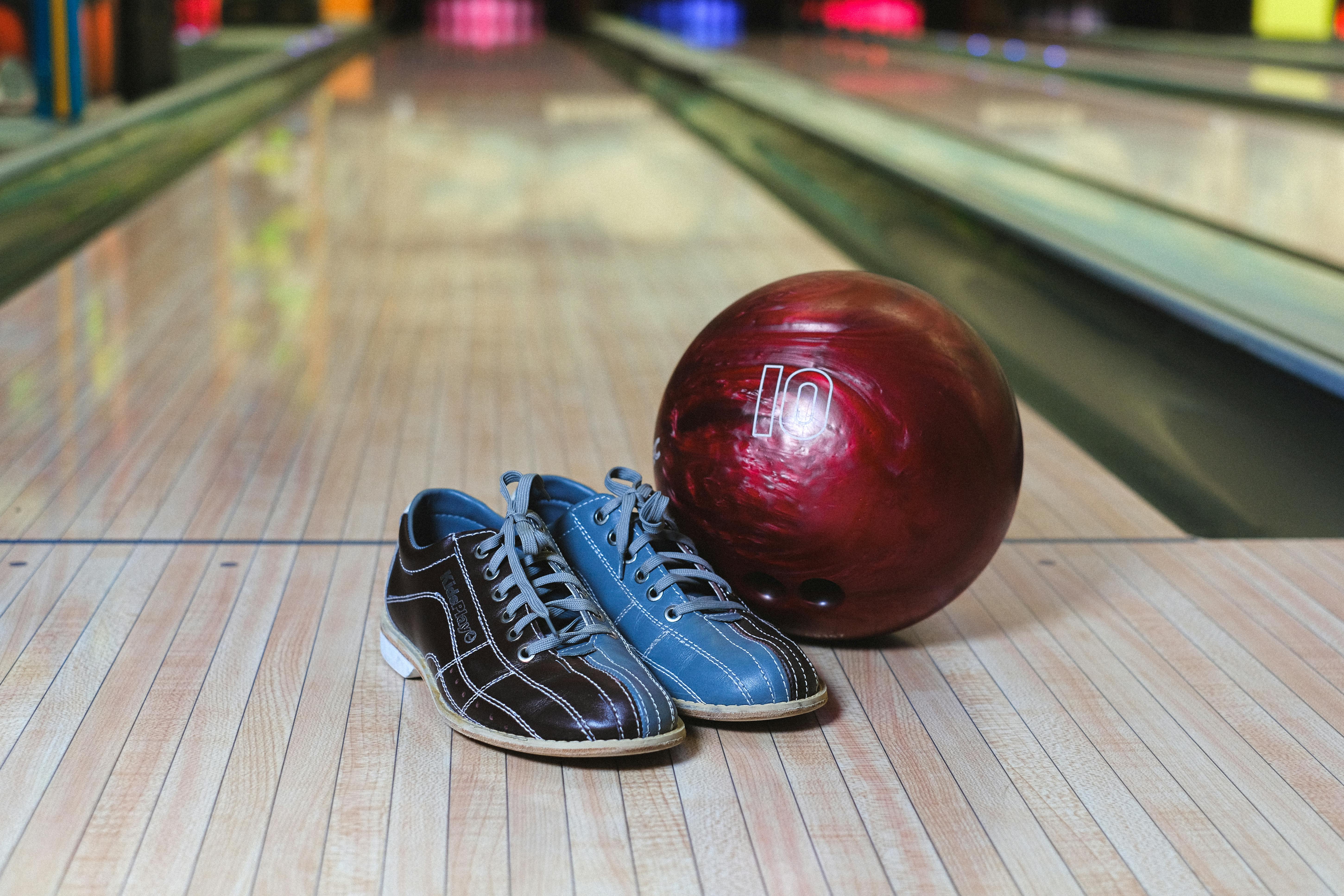Bowling is a great sport that can be enjoyed by people of all ages and skill levels. As you get started in the game, one of the most important decisions you will make is selecting the right bowling ball weight. Choosing the correct ball weight is essential for your comfort, safety, and performance on the lanes. This guide will provide some helpful tips to help beginners select a bowling ball weight that is suited to their needs.Understanding bowling ball weight is important because the weight of the ball affects a bowler’s control over the ball and their ability to strike. Generally, bowling balls range from 6 lbs to 16 lbs and each weight offers different benefits. A lighter ball is easier to control but lacks power while heavier balls offer more power behind them to knock down pins but are harder to control. It is important for bowlers to consider their skill level, physical strength, and style of play when choosing a ball weight.
Standard Bowling Ball Weight
The standard bowling ball weight is 6 to 16 pounds. The weight of the ball depends on the bowler’s preference, arm strength, and bowling style. Heavier balls tend to have more power behind them and are recommended for experienced bowlers who can handle them. Lighter balls are better suited for beginners because they are easier to control and have less power. Generally, children should use a ball that is 8-12 pounds in weight while adults should use a ball that is 12-16 pounds in weight.
It is important to note that most bowling centers require that all balls be between 8-16 pounds in order to ensure safety on the lanes. Each lane also has its own maximum weight limit in order to protect the equipment from damage. It’s best to check with your local bowling center before purchasing a ball as some centers may require heavier or lighter weights depending on their regulations.
In addition, it is important to select a comfortable bowling ball weight that works with your style of play. If a bowler chooses a too heavy or too light of a weight it can affect their accuracy and performance negatively because they won’t be able to control the ball properly due to its size or weight. Experienced bowlers should opt for heavier weights in order to maximize their power while beginners should opt for lighter weights in order to get used to controlling the ball and developing proper form.
Overall, the standard bowling ball weight range is 6-16 pounds with most centers requiring balls between 8-16 pounds. It’s important for bowlers of all levels and abilities to choose an appropriate weight based on their style of play as this will help them maximize their performance on the lanes.
Choosing a Bowling Ball Weight
When selecting a bowling ball weight, there are several factors to consider. The first factor is the bowler’s size and strength. A heavier bowling ball will require more strength to throw, so if the bowler is smaller or not as strong, then a lighter ball might be the better choice. Another factor to consider is the type of lane surface being used. On dry lanes, a heavier ball will tend to hook more than a lighter one; on oily lanes, a lighter ball will hook more due to the extra oil on the lane surface. Finally, it is important to determine what type of style the bowler has when throwing the ball; if they have an aggressive style, then they may want to select a heavier bowling ball; if they have a smoother style, then a lighter bowling ball might be better suited for them.
In addition to these factors, bowlers should also consider their skill level when selecting a bowling ball weight. Beginners should typically start with an entry-level weight of 12-14 pounds in order to get used to throwing the ball and developing skills before moving up in weight. More experienced bowlers may choose a higher weight that best suits their individual styles and needs. It is important for bowlers to take all of these factors into consideration when choosing a bowling ball weight in order to maximize their performance and enjoyment on the lanes.
Factors That Impact Ball Performance
The performance of a ball is affected by many factors, some of which are beyond the control of the player. It is important for players to understand these factors in order to maximize their performance. Some of the key factors that impact ball performance include material composition, size, weight, spin rate, and aerodynamics.
The material composition of a ball can have a significant effect on its performance. Different materials such as rubber, plastic, and leather all have unique properties that affect the trajectory and spin rate of a ball when it is hit. Additionally, the core material used in the construction of a ball can also affect its performance.
The size and weight of a ball also play an important role in its performance. Lighter balls tend to travel farther than heavier ones due to their lower inertia but they are also more difficult to control. Heavier balls generally travel shorter distances but are more stable and easier to control.
Spin rate is another key factor that affects ball performance. A high spin rate causes balls to curve or “hook” during flight while a low spin rate results in straight trajectories with minimal curve or “slice” effects. Selecting the right type of spin rate for a particular shot can make all the difference between success and failure in certain situations.
Finally, aerodynamics can also influence how a ball travels through the air. A well-designed aerodynamic shape reduces drag and enables balls to travel at higher speeds while maintaining stability during flight. This is especially important for long-distance shots where accuracy is paramount.
In conclusion, there are many factors that can influence how well a ball performs when hit by a player or machine. Understanding these factors and how they interact with one another can help players perform better while playing sports involving balls such as golf or tennis.
Calculating the Optimal Weight for You
Maintaining a healthy weight is an important part of a healthy lifestyle. But what is the optimal weight for you? It depends on various factors, including your height, age, gender, and body composition. When trying to determine what your ideal weight should be, it’s important to consider all of these factors in order to achieve the best results.
Your height plays an important role in determining your ideal weight. Generally speaking, the taller you are, the more you should weigh. This is because taller people tend to have more muscle mass and bone density than shorter people. As such, they need more body mass in order to maintain a healthy balance.
Age is also an important factor in determining your optimal weight. As you get older, your metabolism slows down and your body composition changes. This means that it’s important to adjust your ideal weight accordingly as you age in order to maintain a healthy balance of lean muscle mass and fat tissue.
Gender also plays a role when calculating your ideal weight. Generally speaking, men tend to have higher levels of lean muscle mass and bone density than women due to their higher levels of testosterone and other hormones. As such, they should typically weigh more than women of the same height and age range.
Finally, it’s important to consider body composition when calculating your ideal weight as well. People with higher levels of lean muscle mass will typically need more body mass than those with lower levels of lean muscle mass in order to remain healthy and balanced. It’s also important to note that having too much fat tissue can increase health risks such as heart disease or diabetes so it’s essential that you stay within a healthy range for both muscle mass and fat tissue when calculating your optimal weight range.
By taking all of these factors into account when calculating your optimal weight range, you can ensure that you are maintaining a healthy lifestyle that will help keep you fit for years to come!

Pros and Cons of Lighter and Heavier Balls
The weight of a ball can make a big difference in the performance of a game or sport. Lighter balls can be easier to handle, while heavier balls can provide more power and accuracy. Both have their advantages and disadvantages, so it is important to understand the pros and cons of lighter and heavier balls.
One pro of lighter balls is that they are easier to control. With less weight, the ball will not have as much momentum behind it, making it easier to slow down or change directions when needed. This makes them ideal for sports such as tennis or badminton where precision is important.
A con of lighter balls is that they may not travel as far as heavier ones. As they lack the momentum, they may not travel as far when hit, which can be a problem in sports like baseball or golf where distance is key.
Heavier balls offer more power and accuracy than lighter ones do. With more weight behind them, they will travel further when hit, making them better for sports like baseball or golf where distance is important. They also tend to be more accurate since their momentum helps keep them on course even if they are hit slightly off-center.
The main disadvantage of heavier balls is that they can be more difficult to control. The extra weight makes them harder to stop or change direction quickly, which can be a problem in sports like tennis or badminton where accuracy is key.
In conclusion, the pros and cons of lighter and heavier balls should be considered when choosing which one to use for a particular sport or game. Lighter balls are easier to control but may not travel as far while heavier ones offer extra power and accuracy but may be harder to control due to their additional weight.
How to Test and Modify Your Ball Weight
Testing and modifying your ball weight is an important part of optimizing your golf swing. By tweaking the weight of the ball, you can adjust the flight of the ball for improved accuracy and distance. Knowing how to make these adjustments can help you become a better golfer. Here are some tips on how to test and modify your ball weight.
The first step in testing and modifying ball weight is to use a golf ball compression tester. This device measures the amount of force it takes to compress a golf ball, which can give you an idea of how hard or soft it is. If you find that the ball is too soft, then you may need to add some extra weight to it. On the other hand, if it is too hard, then you will need to reduce the weight.
Once you have determined that your ball needs more or less weight, there are several ways that you can go about making this adjustment. One option is to add some lead tape around the outside of the ball. Lead tape comes in different weights, so you can choose one that fits your needs. Another option is to use a balance scale to weigh out small amounts of lead powder and add it directly into the core of the golf ball.
Finally, once you have tested and modified your ball’s weight, be sure to take it out on the course for testing before using it in competition. This will give you an idea of how it performs in different conditions so that you can make any further adjustments as needed. With some practice and patience, you should be able to find just the right balance between power and accuracy with your modified golf balls.
Choosing the Right Bowling Ball Coverstock
Choosing the right bowling ball coverstock is an important step in improving your game. The coverstock of a bowling ball affects its reaction on the lane, making it an essential part of your equipment. Different coverstocks will react differently to oil and friction, so it’s important to choose one that best suits your style and game.
One of the most important factors when choosing a bowling ball coverstock is its surface texture. The surface texture can range from smooth to rough, and each type has different characteristics that can affect your performance on the lane. Smooth coverstocks are best for light oil conditions, while rougher coverstocks are better for heavy oil conditions.
Another factor to consider when choosing a bowling ball coverstock is its hardness. Harder coverstocks offer greater control and less hook potential, while softer coverstocks offer more hook potential and less control. Some bowlers prefer softer coverstocks because they can help generate more revolutions on the ball, while others prefer harder coverstocks for improved control and accuracy.
The type of core also affects the reaction of the ball on the lane. Symmetrical cores are best for beginners or those who want a predictable reaction from their balls, while asymmetrical cores offer more hook potential and can be used by experienced bowlers who want greater control over their shots.
Finally, consider your own personal preference when selecting a bowling ball coverstock. If you don’t like how a certain type of coverstock feels or reacts on the lane, then it’s probably not going to be a good fit for you. Experiment with different types until you find one that you like and that helps improve your game.

Conclusion
Choosing the right bowling ball weight is essential for beginners to have an enjoyable and successful experience. The weight of the ball should be determined by the individual’s arm strength, size, and bowling style. To ensure a good fit and performance, it is important to properly measure and fit the ball for each individual. It is also important to remember that lighter balls are easier to control than heavier balls.
By following these guidelines, beginners can choose a bowling ball weight that will help them improve their game and have more fun on the lanes. With a bit of practice and experimentation, any beginner can find the perfect bowling ball weight for them.
Finally, it is important to remember that selecting the right bowling ball weight is only one part of improving your game. Bowling is a sport which requires skill, practice and technique in order to become successful. So make sure you take some time to learn proper form and technique before you hit the lanes!




